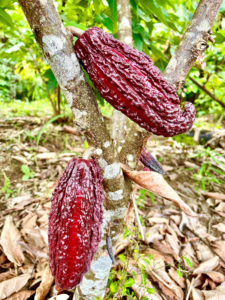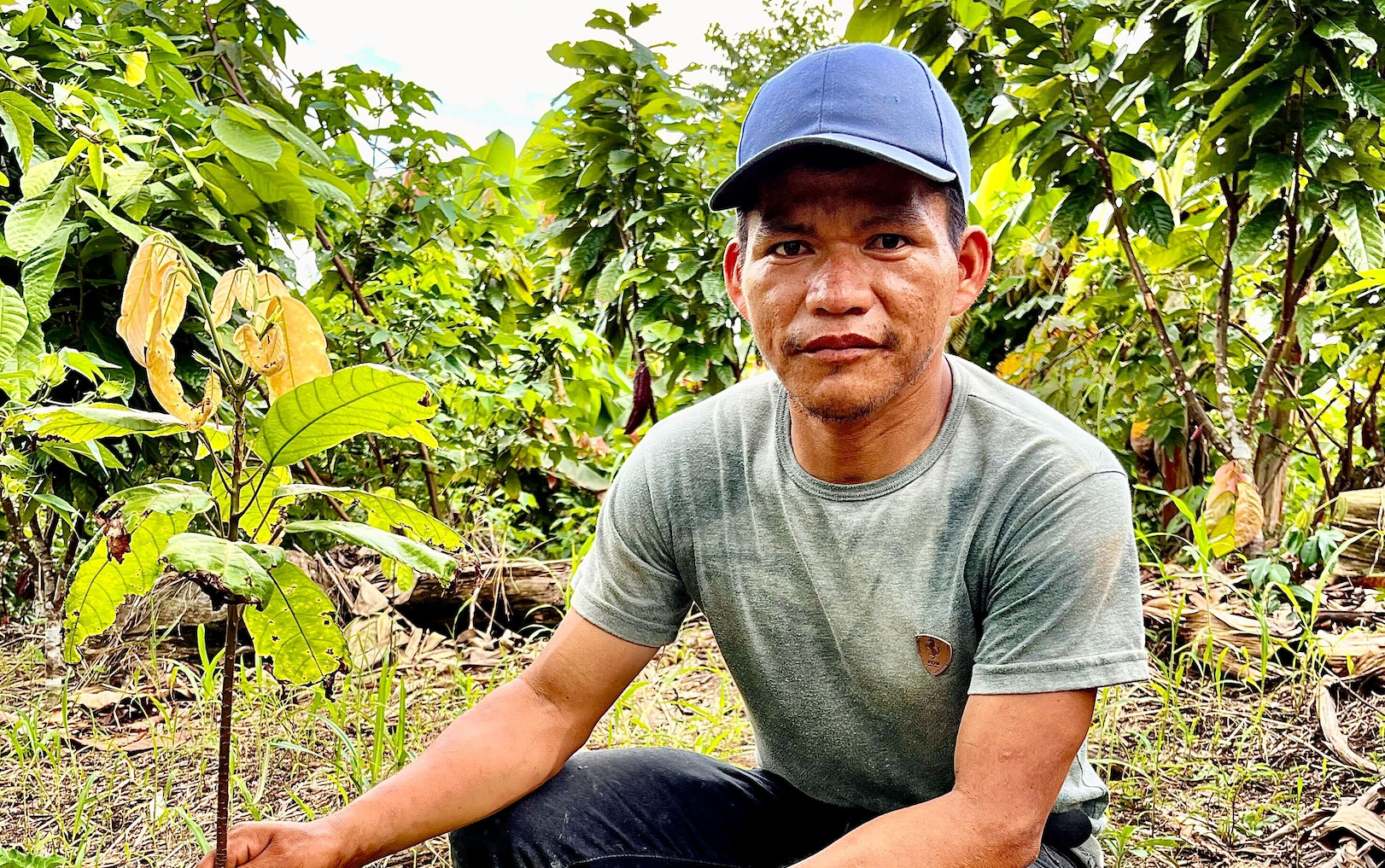Meet Amao. He’s from Sinchi Rocha, one of seven indigenous communities involved in the Nii Kaniti REDD+ project in Peru. Amao is a farmer, and has been producing cacao, cotton and papaya through agroforestry systems for over two years, on which he’s now a true expert. He’s been working closely with local NGO AIDER, the Nii Kaniti project’s implementing partner, on agroforestry techniques and has built up strong experience and a set of skills that he now teaches to other farmers within his community and others in the area.
To get to Amao’s community of Sinchi Rocha, you need to take a three hour car ride from the city of Pucallpa, which is the capital of Peru’s Ucayali region, to a small river where you hop in a Pequepeque for a meandering boat ride down the Ucayali River and deep into the Amazon. Here and further along the river, seven indigenous communities are working in partnership with AIDER to protect more than 127,000 hectares of critically threatened old growth forest.
 To conserve this landscape, AIDER uses climate finance from the sale of carbon credits generated by the project’s emissions avoidance activities to support farmers like Amao with resilient and sustainable livelihoods opportunities. These farmers have lived in the area for generations, thriving off the land and growing food and other crops as part of a strong forest economy. However, as industrial agriculture spread to the region, increasing numbers of farmers have been incentivised to pursue activities that degrade the landscape, such as ‘slash and burn’ agriculture. AIDER’s activities in the area work to return and rebuild the incentive to pursue sustainable livelihoods activities that conserve forest resources and protect community resilience.
To conserve this landscape, AIDER uses climate finance from the sale of carbon credits generated by the project’s emissions avoidance activities to support farmers like Amao with resilient and sustainable livelihoods opportunities. These farmers have lived in the area for generations, thriving off the land and growing food and other crops as part of a strong forest economy. However, as industrial agriculture spread to the region, increasing numbers of farmers have been incentivised to pursue activities that degrade the landscape, such as ‘slash and burn’ agriculture. AIDER’s activities in the area work to return and rebuild the incentive to pursue sustainable livelihoods activities that conserve forest resources and protect community resilience.
Working with AIDER staff, Amao is now managing a thriving plot of land that’s producing multiple crops, although his main commodity is the lucrative cacao. He’s learnt to plant cacao from north to south, as this crop doesn’t need the sun light for the entire day, unlike trees like shihuahuaco and capirona that is planted west to east to ensure sunlight all day. He’s also producing cotton among his cacao crops, as its fast-growing nature allows him to make an income while his cacao matures. Best of all, Amao will soon be working with Nii Biri, a local community cooperative, that plans to purchase cacao and other crops from farmers like Amao at above market rates. This secure route to market means that Amao can make long-term plans around how to manage his land and the crops he grows and sells.
As an expert in agroforestry techniques, you’ll regularly find Amao travelling to nearby indigenous communities to support other farmers, a teaching opportunity that’s now become a career for Amao, as he’s paid for this work by AIDER. He recently travelled to Puerto Maldonado in the southeast of Peru for an AIDER funded training course, where he learnt about the latest science behind micro-grafting and cacao crop maintenance. Most recently, Amao has been focused on the exciting development of a cacao post-harvest facility in his very own Sinchi Rocha, which is a direct result of the successful cacao agroforestry programmes expanding through the area and a clear signal of the long-term nature and resilience of this income stream for local farmers.
Amao is a true forest hero, a name we’ve coined to refer to the many people of different backgrounds, communities and industries committed to protecting the natural environment through a forest economy that conserves resources sustainably. Amao is not only an example of how forest heroes play an important role in conserving this landscape, but in supporting others to do the same.
Contact us to learn more about how your business can support the Nii Kaniti project as part of a high-integrity pathway to net zero.
